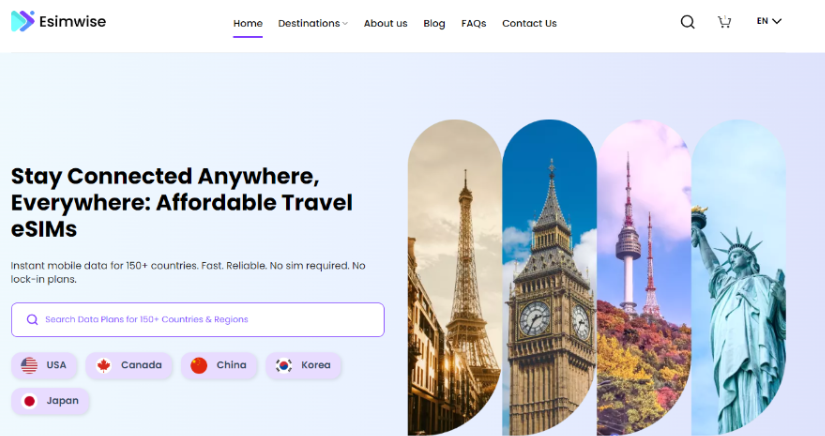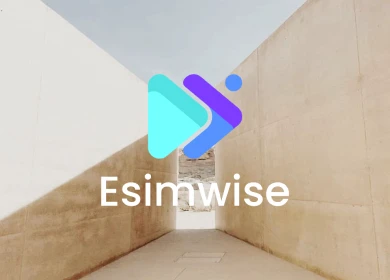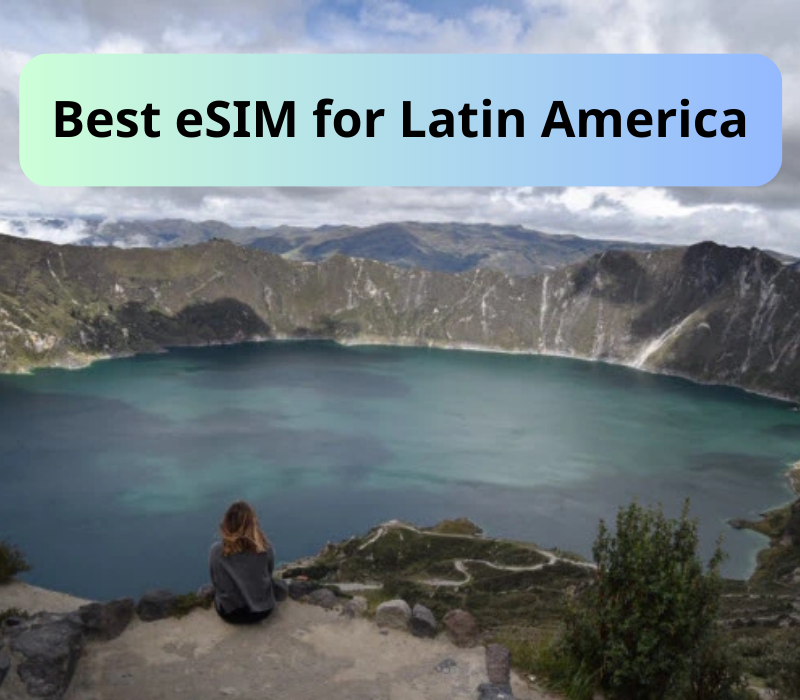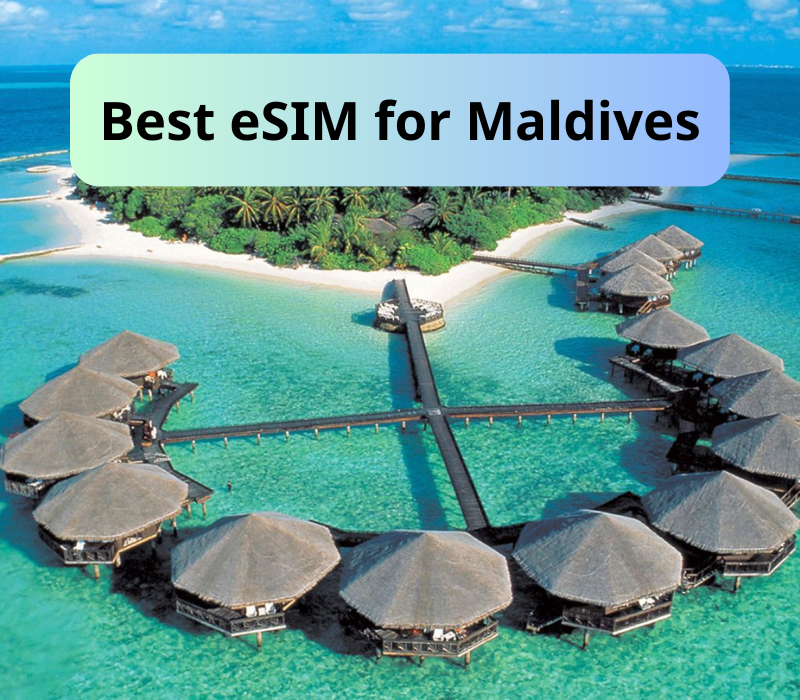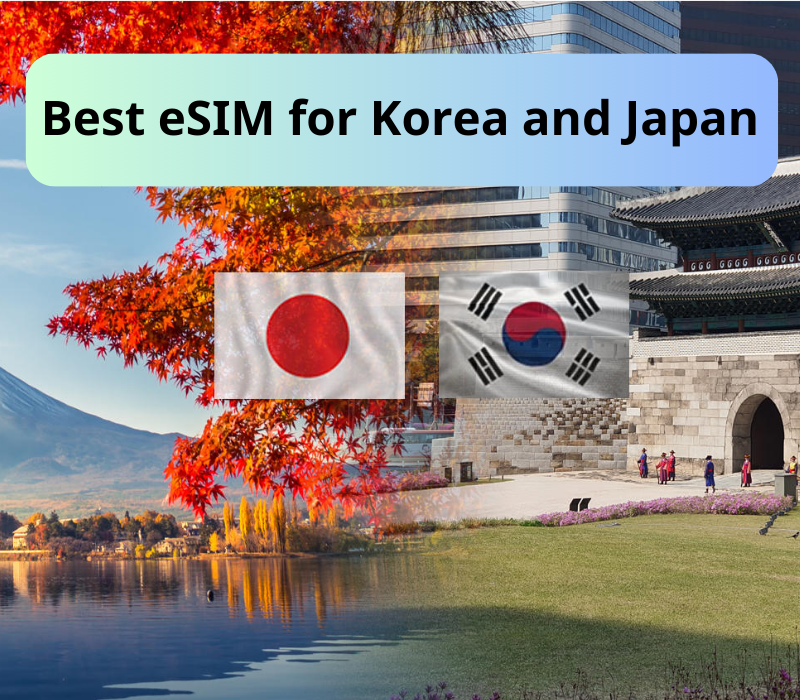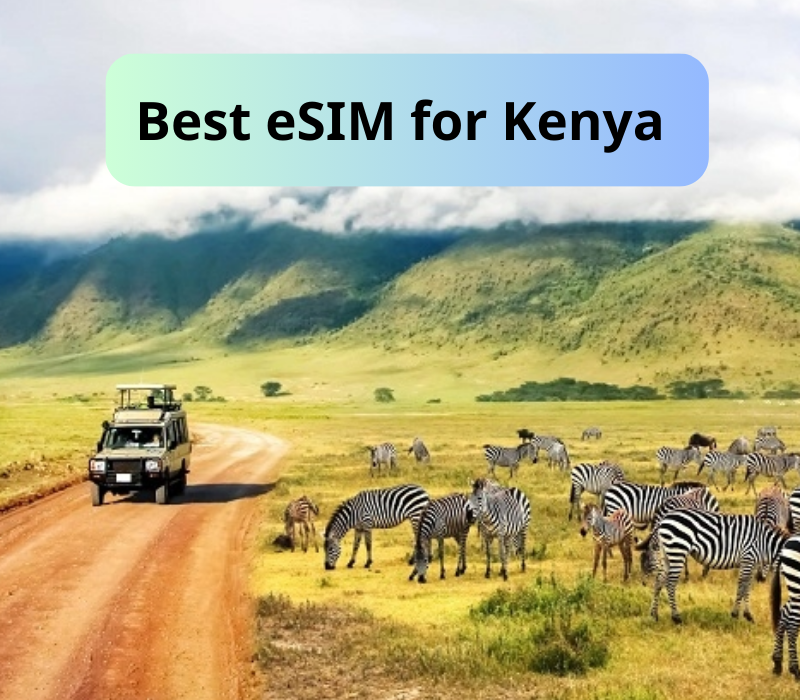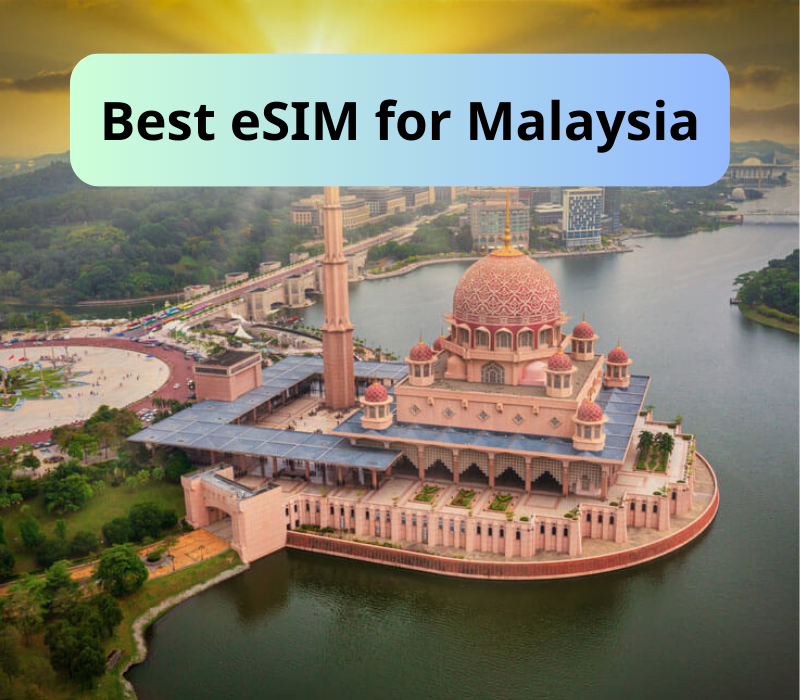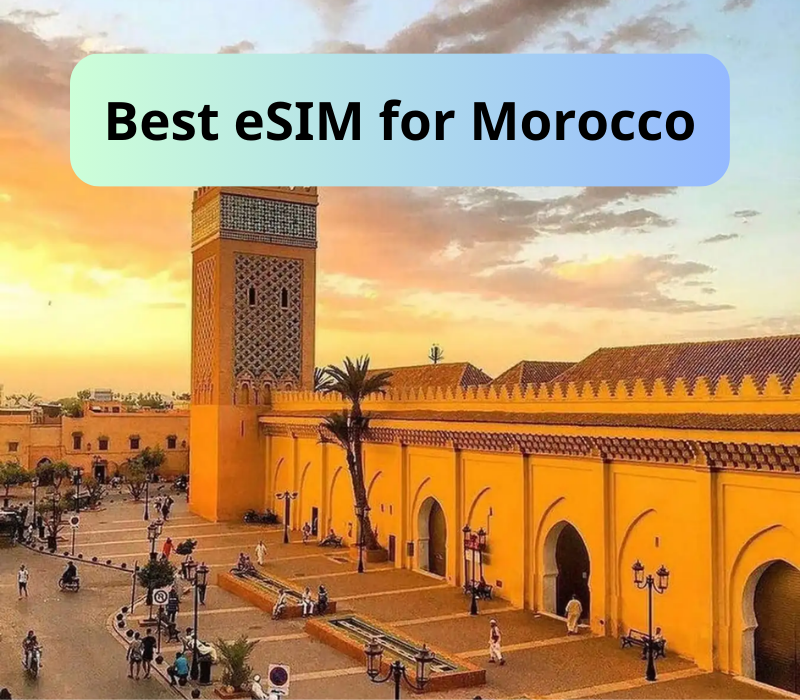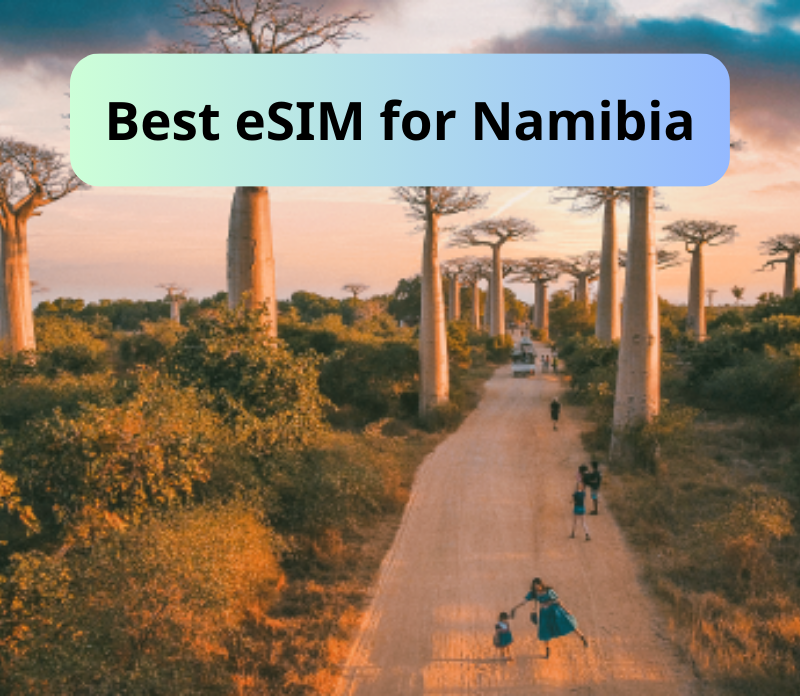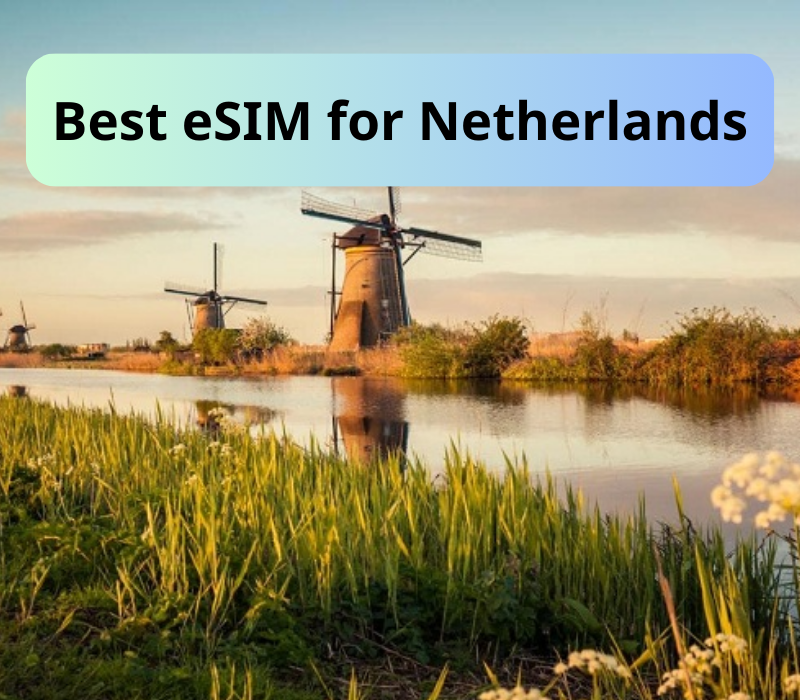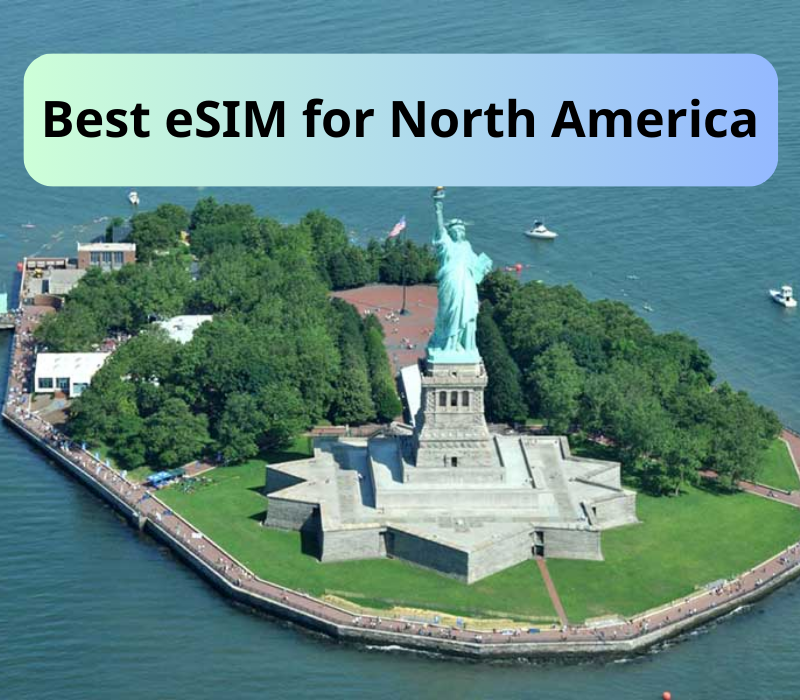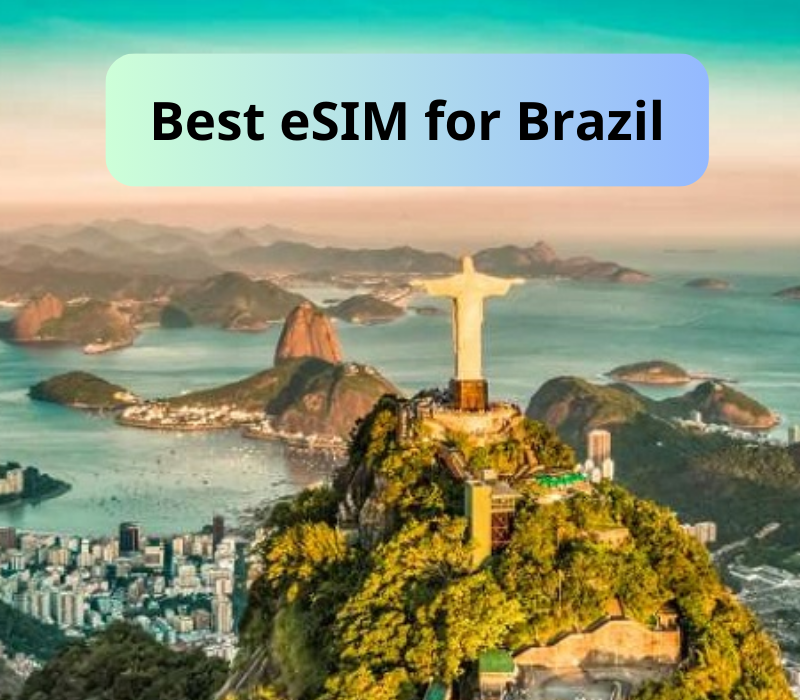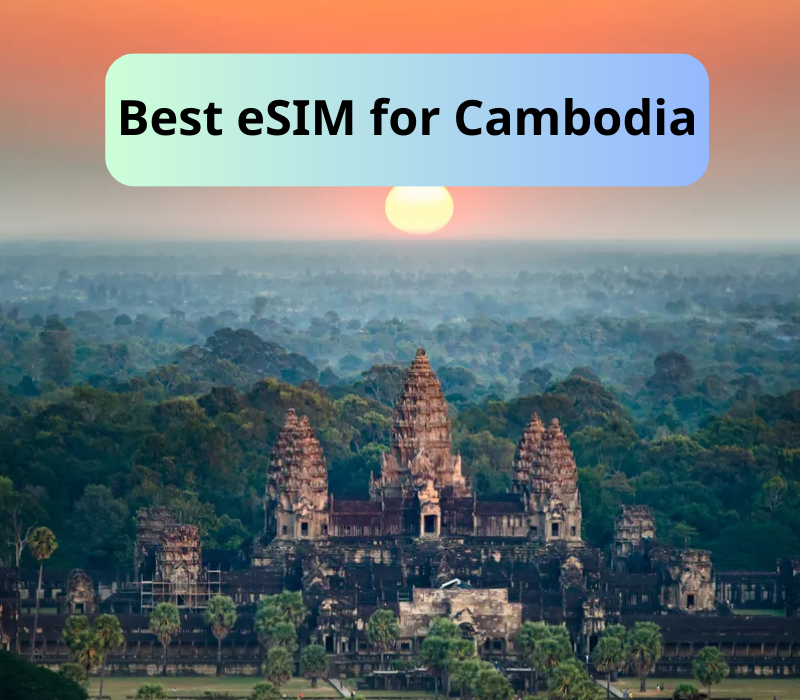For any travelers, one thing became abundantly clear: connectivity is not just a convenience; it is a lifeline. Every click, every swipe, every message sent holds the potential to bridge distances, connect communities, and transform lives. Yet, finding reliable connectivity can be a challenge.
In my quest for seamless connectivity, I delved deep into several eSIM providers, seeking out the best options tailored specifically for Africa. Along the way, I explore the top five options to trust.
In this article, I will uncover the best eSIM for Africa that not only offers reliable connectivity but also understands the unique needs of travelers. So, grab your virtual passport, and let’s embark on a digital adventure that promises to connect us all.
Best eSIM for Africa: The top 5
For travelers looking for eSIM options in Africa, there are several providers offering a range of plans to suit different needs. Here are the top choices based on coverage, price, and data speed.
1. Esimwise
Let me mention the best eSIM for Africa – the Esimwise eSIM! I was blown away by the convenience and reliability it offered. With Esimwise, I got a reliable 3G/4G/5G data connection throughout my trip, which was a massive relief because I didn’t have to worry about running out of data or constantly recharging.
What impressed me the most was the quality of the network coverage. Esimwise partners with the best networks in Africa, ensuring that I have a strong and stable connection wherever I go. Whether I was exploring bustling cities or remote countryside, I never had to deal with slow or unreliable internet.
One of the best features of Esimwise is the included VPN, which allowed me to browse the internet without any restrictions. Whether I was checking emails, streaming videos, or browsing social media, I felt secure knowing that my data was encrypted and my privacy was protected.
Another standout feature was the option to keep my WhatsApp number on my mobile phone. This meant I could stay connected with friends and family back home without having to switch numbers or worry about expensive international roaming charges.
Esimwise offers two options tailored to different regions in Africa: the South Africa eSIM and the Central Africa Republic eSIM. Both options support up to 5G connectivity, and you can choose between day passes or fixed plans depending on your needs.
What I like:
- Stable 4G/5G data speed in almost African countries
- Top up option
- A VPN feature for unrestricted browsing
What I don’t like:
- None
If you travel to the Central Africa Republic, you can choose Esimwise eSIM via this page.
If you travel to South Africa countries, you can select Esimwise eSIM via this page.
2. Airalo
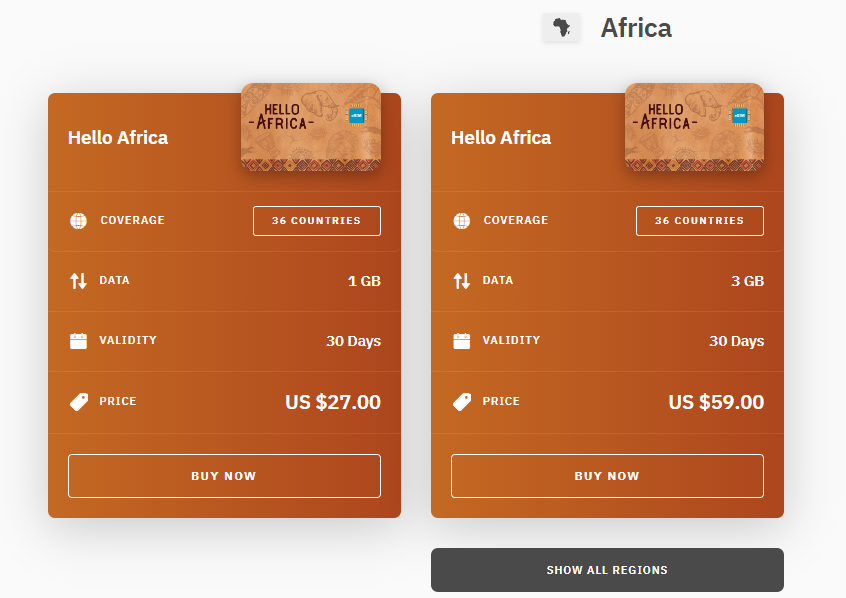
Seeking the best eSIM for Africa? Airalo’s eSIM options for Africa offer travelers like me the flexibility to choose the plan that best fits our needs and budgets. With two distinct options available, I had the opportunity to tailor my connectivity experience to suit my specific requirements.
The “Hello Africa eSIM” plan caught my eye with its generous data allowance of 3 GB and a validity period of 30 days. Priced at $59.00, it offered extensive coverage across 26 countries in Africa. This plan provided me with ample data to stay connected throughout my travels, whether I was browsing the web, staying in touch with loved ones, or navigating unfamiliar streets. Additionally, the availability of a top-up option meant that I could easily extend my data allowance if needed, ensuring uninterrupted connectivity throughout my trip.
On the other hand, the “1 GB Africa eSIM” plan offers a more budget-friendly option for travelers with lighter data needs. With 1 GB of data and a validity period of 30 days, priced affordably, this plan provided a suitable solution for those who primarily needed basic internet access during their travels. Like the “Hello Africa eSIM” plan, it also offered a top-up option for added flexibility.
Both eSIM options from Airalo featured convenient activation policies, starting automatically when connected to a supported network. This meant that I didn’t have to worry about manually activating my eSIM or dealing with complex activation processes. Additionally, neither plan required eKYC (Identity Verification), streamlining the purchasing and activation process even further.
While considering these options, it’s important to note that Airalo provides additional information about potential speed limitations in certain countries like the Central African Republic, Guinea Republic, and Liberia. This transparency helps travelers manage their expectations and plan their connectivity accordingly, ensuring a smoother experience overall.
What I like:
- Network coverage is up to 36 countries
- High speed for staying connected
- Top up option is available
What I don’t like:
- Data-only plan
- Lower speeds in the Central African Republic, Guinea Republic and Liberia
- Higher price plan compared to other providers
- Limited data offerings (only up to 3 GB per plan)
3. Yesim
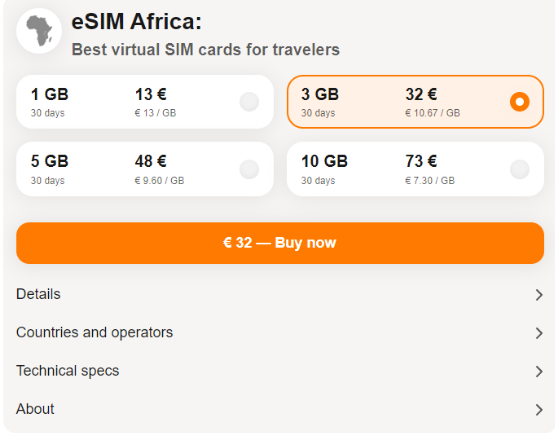
On the list of the best eSIM for Africa, Yesim is a stand-out name. One of its amazing features is the flexibility it offers in terms of data allowances and validity periods.
With various plans available, ranging from 5 GB, and validity periods spanning from 3 days to 60 days, I could easily select the plan that best suited my needs and travel duration. This ensured that I had enough data to stay connected throughout my trip without overspending or running out unexpectedly.
Activating Yesim’s eSIM was simple. Once I purchased a plan and activated it on my eSIM-compatible device, it automatically connected to a local cellular network in Africa, providing me with seamless internet access. This automatic activation process saved me time and hassle, allowing me to focus on enjoying my travels without worrying about connectivity issues.
Another advantage of Yesim’s eSIM is its multiple country coverage. With a single Yesim eSIM for Africa, I could use it in various African countries, eliminating the need to purchase separate SIM cards for each destination. This not only saved me money but also simplified the process of staying connected while traveling across different countries in Africa.
What I like:
- Flexible data plans, up to 60 days validity
- Multiple counties coverage
What I don’t like:
- None
4. Holafy
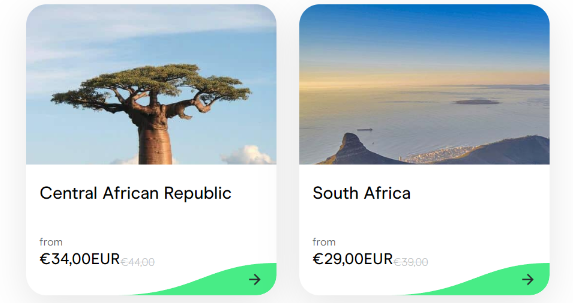
Holafly’s eSIM for Africa impressed me with its focus on connectivity and convenience. With unlimited data options available for various travel durations, ranging from 5 to 30 days, I never had to worry about running out of data during my trip. This was particularly handy as I could choose the plan that best suited the length of my stay, ensuring I had uninterrupted access to the internet throughout my journey.
While using Holafly’s eSIM, I found the network coverage to be reliable in major cities and tourist destinations across the African countries I visited. Although speeds may vary in remote areas, I generally experienced smooth 3G/4G/LTE connectivity, which allowed me to browse the web, use maps, and stay connected with ease.
One of the standout features of Holafly’s eSIM is its format. Being in eSIM format meant I didn’t have to deal with physical SIM cards, eliminating the risk of losing them or dealing with the hassle of swapping them between devices. Activating the eSIM was incredibly easy – all I had to do was scan a QR code received upon purchase, and I was ready to go.
What I appreciated most about Holafly’s eSIM was the convenience it offered. Unlike some other providers, there was no need for any identification documents to purchase the eSIM, making the process quick and hassle-free. Additionally, Holafly’s prepaid plans allowed me to pay upfront for my chosen data plan, eliminating the risk of unexpected charges and providing peace of mind throughout my trip.
What I like:
- 3G/4G/LTE data connectivity
- A wide range of data plans
- Reliable network coverage for travelers
What I don’t like:
- Data-only plan
5. BNESIM

Continuing on with my journey exploring the best eSIM for Africa, I also had the opportunity to try out BNESIM’s eSIMs. While Esimwise impressed me with its comprehensive coverage and seamless experience, BNESIM offered a slightly different approach that catered specifically to data needs.
What struck me first about BNESIM’s eSIMs for Africa is that they are data-only plans. This means they don’t come with a phone number attached, focusing solely on providing internet access. While this might not suit everyone, for me, it was perfect as I primarily needed data for staying connected and navigating while traveling.
BNESIM offers a variety of data plans tailored to different African countries. From small data packages for short stays to larger monthly plans for extended trips, there is something to suit every need. I appreciated the flexibility of being able to choose between daily, weekly, and monthly data validity options, depending on my itinerary.
Local coverage is another standout feature of BNESIM’s eSIMs. Upon arrival in each African country, the eSIM automatically connected to the best local network, ensuring reliable coverage wherever I went. This was particularly reassuring when exploring remote areas or venturing off the beaten path.
With BNESIM, I also had access to 5G speeds, depending on the plan and my device’s capabilities. This meant faster and more reliable internet browsing, streaming, and downloading, enhancing my overall experience during my travels.
Activation of BNESIM’s eSIMs was a breeze. There was no need for manual configuration; the eSIMs were activated automatically upon connecting to a cellular network, saving me time and hassle.
What I like:
- 5G data speed
- Multiple data packages, from 7 GB and up to 20 GB
- Easy to activate
What I don’t like:
- Data-only plan
- Data coverage in only 14 African counties
How to choose an eSIM for your Africa travel?
It is not hard to find the best eSIM for Africa based on your usage requirements. There are some factors that you should be aware of when choosing a suitable one, so please read this section carefully for more insights.
1. Network coverage is the most important factor
The first factor to consider when choosing an eSIM for your African travel is network coverage. Network coverage refers to the geographical areas where the eSIM provider’s network is available and provides a reliable connection. It is crucial to ensure that the eSIM provider has good coverage in the specific African countries or regions you plan to visit.
In Africa, the availability and quality of network coverage can vary significantly between urban and rural areas. While major cities and popular tourist destinations generally have good coverage from multiple network operators, remote or less-developed regions may have limited or no coverage at all.
To assess network coverage, you can visit the eSIM provider’s website or contact their customer support to inquire about their coverage in specific African countries or regions. Some eSIM providers may provide coverage maps on their websites, allowing you to check the availability of their network in different areas.
2. Data speed is a crucial part
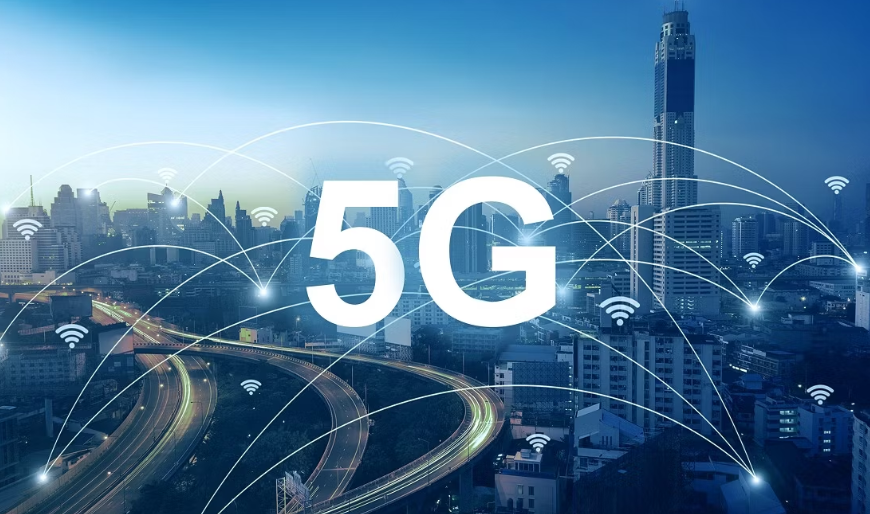
The second factor to consider is data speed and performance. Data speed refers to the rate at which data can be transmitted over the network, while performance encompasses factors such as latency and network congestion.
Fast and reliable data speeds are essential for a seamless browsing experience, fast downloads and uploads, smooth video streaming, and other data-intensive activities. When evaluating eSIM providers, it is important to inquire about the data speeds they offer, particularly in the areas you plan to visit in Africa.
Different eSIM providers may have varying levels of data speed and performance due to factors such as their network infrastructure, technological capabilities, and partnerships with local network operators. Some providers may prioritize high-speed data connections in urban areas, while others may have more consistent performance across rural and urban regions.
3. Consider data price carefully
Carefully evaluating the data plans and pricing options to ensure that they align with your budget and data usage needs is a must. Here are some key points to consider when assessing data prices:
- Data allowance: Consider your typical data usage patterns and estimate how much data you are likely to consume during your Africa travel. Choose a data plan that offers an adequate data allowance to meet your needs without incurring excessive costs or running out of data frequently.
- Validity period: Check the validity period of the data plans offered by the eSIM providers. Some plans may have a short validity period (e.g., 24 hours, 7 days, 30 days), while others may offer longer durations. Consider the duration of your stay in Africa and select a plan that aligns with your travel duration to avoid paying for unused data.
- Additional features or services: Some eSIM providers may offer additional features or services bundled with their data plans. These could include benefits like free access to specific apps or services, unlimited usage during certain times of the day, or access to Wi-Fi hotspots. Evaluate these additional features to determine if they provide value and align with your specific requirements.
- Pay-as-you-go options: In addition to traditional data plans, some eSIM providers may offer pay-as-you-go options where you are charged based on your actual data usage. This can be beneficial if you have unpredictable or fluctuating data needs during your Africa travel. However, pay attention to the per-unit pricing to ensure it aligns with your budget and usage patterns.
4. Check if the customer support is reliable
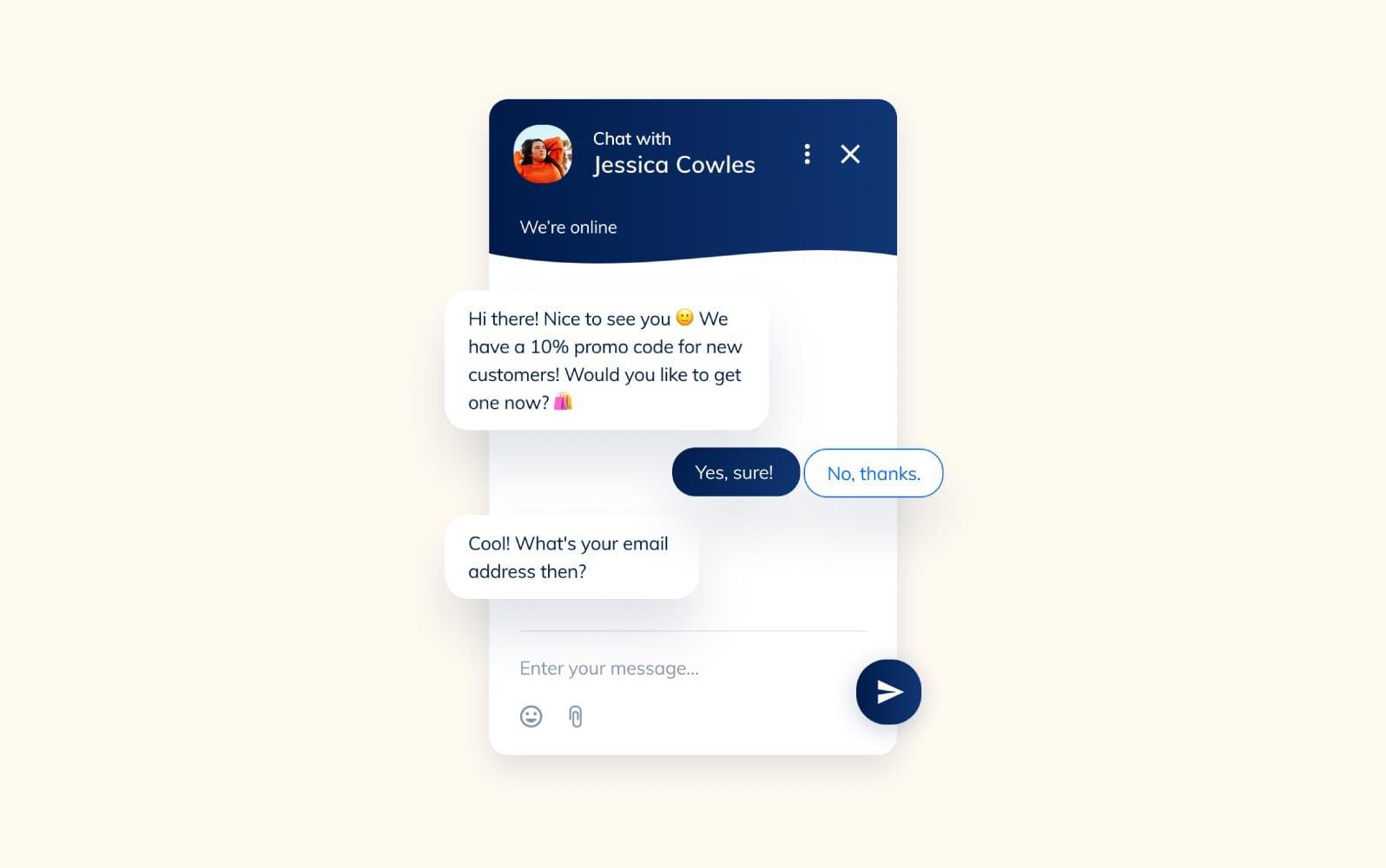
Reliable customer support ensures that you have assistance and guidance whenever you encounter issues or need help with your eSIM service. You can determine the availability of customer support channels such as phone, email, live chat, or social media. Check if the eSIM provider offers 24/7 support or operates within specific hours. Prompt and responsive customer support can help resolve any connectivity or service-related issues efficiently, especially if you are in a time-sensitive situation.
Another thing to consider is the language support provided by the eSIM provider. If you are not fluent in the local language of the region you are traveling to in Africa, ensure that the customer support team can communicate effectively with you in a language you are comfortable with. This can facilitate clear communication and effective problem-solving.
You can also evaluate the availability of comprehensive support documentation such as FAQs, user guides, or tutorials on the eSIM provider’s website. Well-documented resources can help address common queries or concerns without the need for direct customer support interaction.
FAQs
1. Does eSIM work in Africa?
Yes, eSIM technology works in Africa. Many mobile network operators in Africa have started supporting eSIM functionality, enabling customers to use eSIM-enabled devices. This technology is particularly beneficial for travelers as it allows them to easily switch between local network providers without the hassle of purchasing and inserting a physical SIM card. eSIM also provides an opportunity for people to use multiple SIM profiles on a single device, making it useful for those who want to separate work and personal communications or maintain separate data plans.
2. Which is the best eSIM plan for Africa?
The best eSIM plan for Africa comes from the Esimwise provider. It provides a fast-lightning 3G/4G/5G data speed to stay connected with a wide network coverage in all African countries. This is a huge benefit as a stable connection is the priority for every traveler to the foreign landscape.
What carriers support eSIM in Africa?
Several carriers support eSIM in Africa, so you can rest assured that you can enjoy eSIM benefits when traveling here. Some carriers can count on as following:
- Ghana: AirtelTigo, MTN, and Vodafone
- Kenya: Airtel and Safaricom
- Libya: Almadar Aljadid
- Mauritius: Emtel and Orange
- Morocco: Maroc Telecom
4. How do I activate eSIM Africa?
Here are some steps that you can follow to activate eSIM in Africa:
- Step 1: Ensure your device supports eSIM technology or not.
- Step 2: Choose an eSIM data plan based on your needs. Decide where to go and opt for either South Africa eSIM or the Central Africa Republic eSIM.
- Step 3: Once you have received the QR code or activation key from your MNO, navigate to the settings menu on your device.
- Step 4: Look for the option to add a new cellular plan or activate eSIM. This option is typically found under “Cellular” or “Mobile Data” settings.
- Step 5: Choose the option to add a new plan via eSIM and follow the prompts to scan the QR code or enter the activation key provided by your MNO.
- Step 6: After scanning the QR code or entering the activation key, your device will activate the eSIM and connect to the network.
Wrap up
Through our exploration, we have unearthed the best eSIM for Africa that promises to empower individuals and communities across the continent. Whether it is staying connected while on the go, accessing essential services, or fostering economic growth, eSIM technology has the power to transform lives.
If you found this article insightful and helpful, please consider sharing it with your friends, family, and colleagues. Together, we can spread awareness about the importance of connectivity in Africa and empower others to make informed choices.




